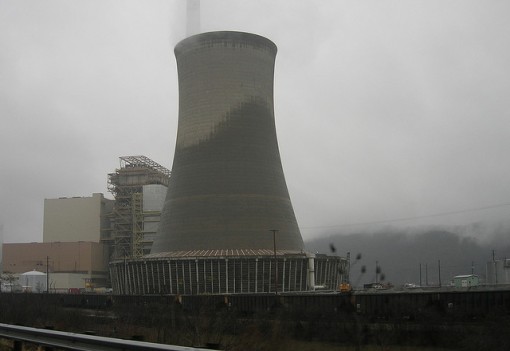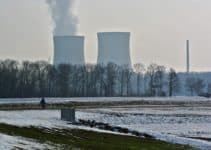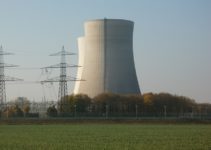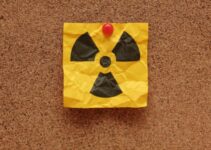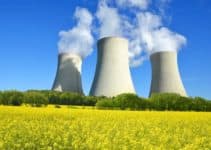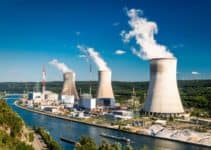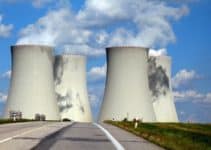When it comes to listing the top 30 nuclear facts, there is a mix of the good, the bad and the ugly. What may surprise you is how little difference there is between the risks of nuclear energy and fossil fuel energy, although the benefits may be greater.
Read more about pros and cons of nuclear energy.
What is Nuclear Energy?
Nuclear energy is the energy stored in the nucleus of an atom. It can be used to produce electricity. But, before it can used, it must be released. The enormous energy that is stored in the bonds that hold atoms together can be released by two processes: nuclear fission or nuclear fusion. In nuclear fission, atoms are split to form smaller atoms, releasing energy whereas in nuclear fusion atoms are combined or fused to form a larger atom. This is how the sun produces energy.
The process to produce electricity from nuclear reactor is similar to most types of reactor. The only difference is that “chain reaction” is used to produce the heat. Nuclear power plants use nuclear fission to produce electricity. A nuclear power reactor uses uranium rods as nuclear fuel to generate heat that will be used to generate electricity. Carbon dioxide and water is then used to take the heat away to produce steam and generate electricity. The steam then turn turbines which drive generators.
Below are 30 Facts on Nuclear Energy
Fact 1: Most people don’t realize that over 20-percent of the US electricity is provided by nuclear power. There are just over 100 nuclear power plants in operation in the country. The earliest came on long before 1979. Despite their presence and contribution to the country’s support, no new plants have been built since the 1979 and the Three Mile Island incident.
Fact 2: While the process of getting all of the materials to build a nuclear plant created environmental pollution, and nuclear waste is an issue – the process of using nuclear energy and producing it has no significant environmental impact. Using fossil fuels contributes to pollution at every stage of production and use.
Fact 3: Worldwide, there are over 400 commercial nuclear reactors producing energy for 31 countries.
Fact 4: In the entire history of nuclear energy production, there have only been 3 major disasters – Three Mile Island, Fukushima, and Chernobyl. In the past 25 years, there have been over 10 major disasters with fossil fuel energy – the largest of which was the BP oil spill.
Fact 5: The former Soviet Union was the first world power to use nuclear energy to produce electrical power. The Obninsk Power Plant came online in 1954.
Fact 6: The US was the second global power to allow for commercial reactors to produce electricity. The Shippingport Power Plant came online in 1957.
Fact 7: The US government is attempting to switch from storing nuclear waste in cooling ponds and surface casks by burying it underground in a special site on Yucca Mountain in Nevada. The federal government is facing local state opposition to this plan.
Fact 8: The US was the first global power to use a nuclear powered submarine. The USS Nautilus was launched in 1954. It was the first submerged vessel to travel under the North Pole and remained in service until 1980,
Fact 9: The 104 nuclear power plants in the US are neighbors to over 3 million people, all who live within 10 miles of them.
Fact 10: Nuclear fusion is the safest way to create power. It involves putting two atoms together to make one. The technology has never been implemented on a broad scale, so almost all nuclear power plants use nuclear fission – which splits one atom into two, and is considered more dangerous.
Fact 11: Every year and a half to two years, every nuclear plant goes through a cleaning cycle that shuts down the plant to allow for the removal of radioactive waste.
Fact 12: The first developed country to follow through on the agreements to destroy nuclear weapon stockpiles and cease production of nuclear weapons was South Africa. A newcomer to nuclear warfare, they had only developed nuclear weapons in the late 80s.
Fact 13: The former Soviet Union was “helped” by the US to create their first nuclear weapons. A successful spy venture stole them the information they needed to complete their program from the Los Alamo laboratories in the US that created nuclear weaponry.
Fact 14: While concern about exposure to radiation is valid, some research shows that you will get more radiation over your lifetime from being around personal electronics than from being near a nuclear power plant.
Fact 15: The largest nuclear reactor is actually the Sun. It uses nuclear reactions, a natural process, to convert hydrogen to helium.
Fact 16: The Manhattan Project, a research team based in Chicago in 1942, produced the first functioning nuclear reactor design.
Fact 17: The US tests their nuclear weapons in Nevada and in the Pacific Proving Grounds. The Proving Grounds cover the Marshall Islands.
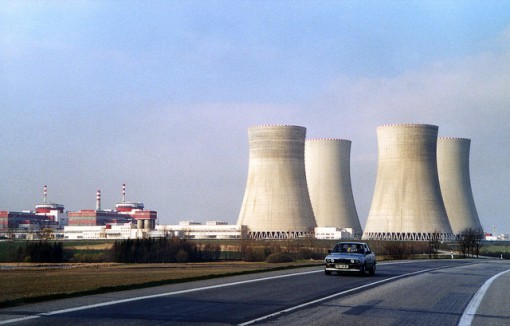
Fact 18: Tsar Bomba, from the former Soviet Union, remains the most powerful nuclear device ever created. It was tested in 1961 over Novaya Zemlya. And the mushroom cloud it produced could be seen clearly from over 600 miles away.
Fact 19: There are 4 different tests used in developing a nuclear weapon. They are the atmospheric and underwater test, as well as the exoatmospheric and underground tests.
Fact 20: The US has concerns about two points in ongoing world crises that have the potential to lead to a nuclear war. The first is featured in the conflict between India and Pakistan; the second is the conflict over China and Taiwan, which would also involve the US.
Fact 21: In the event of a disaster, should you be exposed to nuclear material – remove all of your clothes. This will also remove almost 90% of the radioactive material you were just exposed too.
Fact 22: The event at Fukushima in 2011 led to many countries stopping plans for increased nuclear power plants, while others are staying on track. It should be noted that growing countries, such as China and India, are still pursuing nuclear power.
Fact 23. The event at Fukushima also caused a downgrade and the predicted amount of energy that nuclear plants would provide to the global economy. This has led to concerns over what could be used to fill the gap in need by 2035.
Fact 24: Shearon Harris in North Carolina is one of the primary areas that Homeland Security is securing against terrorist attacks. It has the largest nuclear waste storage pool in the country.
Fact 25: Nuclear tests don’t make the news often, so many people aren’t aware there were over 55 tests a year for 30 years. That’s more than a test a week.
Fact 26: It can cost over 6 billion dollars to build one new reactor for an existing plant.
Fact 27: The largest surface nuclear powered ship is not only over 50 years old, it’s still in service. The USS Enterprise was put into service in 1960 and is 1,122 feet long.
Fact 28: Project Prometheus is the NASA initiative to use nuclear power for long distance space exploration. The use of nuclear power as a primary fuel source could increase speeds and cut costs of missions.
Fact 29: Nuclear medicine is used to diagnose and treat many different diseases. It uses isotopes to explore the body. Another version of it is radiotherapy, which is used to treat certain cancers by using radiation to target and destroy cancer cells.
Fact 30: Uranium isn’t new. While using it as a source of power is new, during the middle ages it was used to transform the color of glass.
